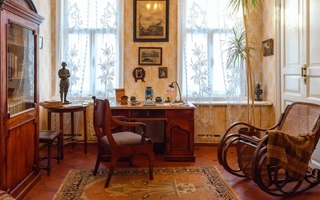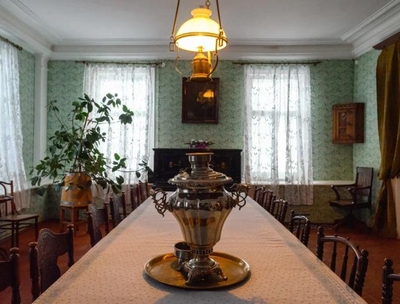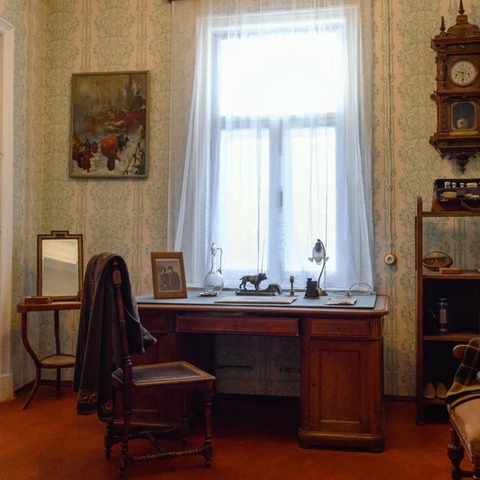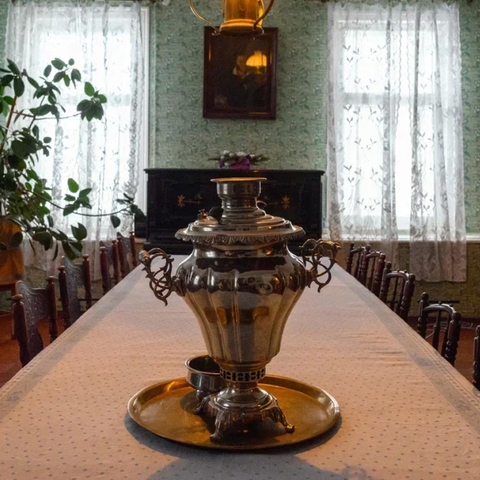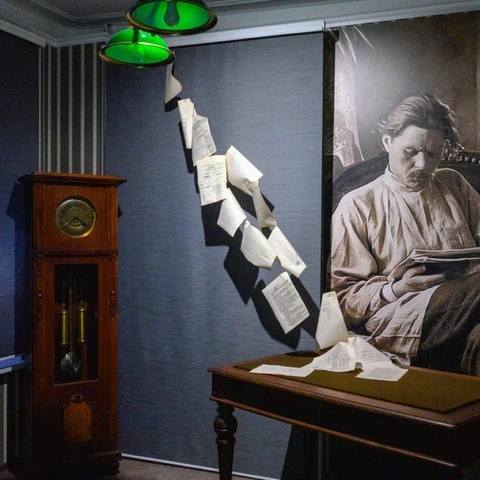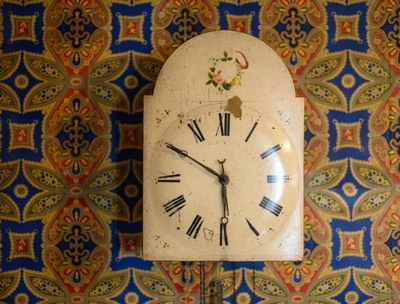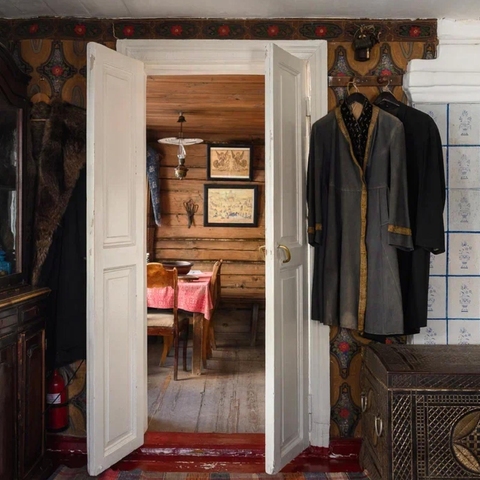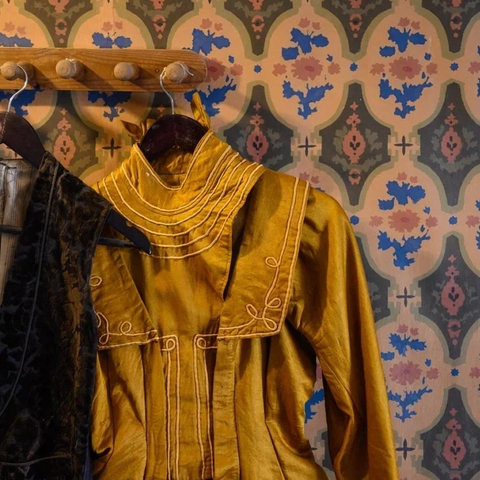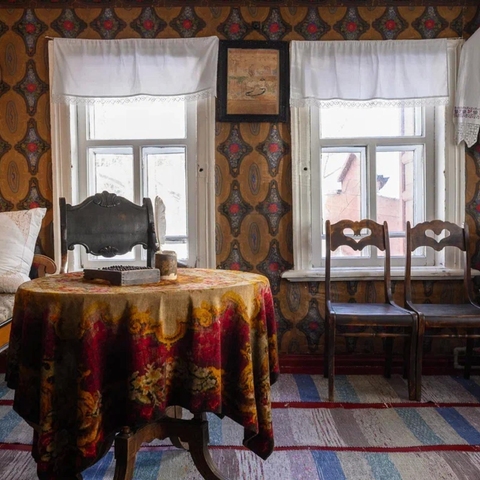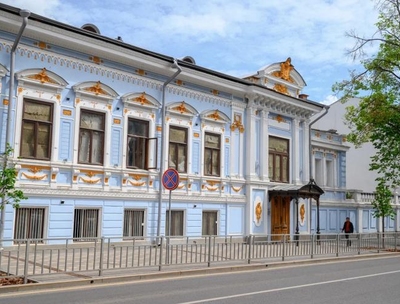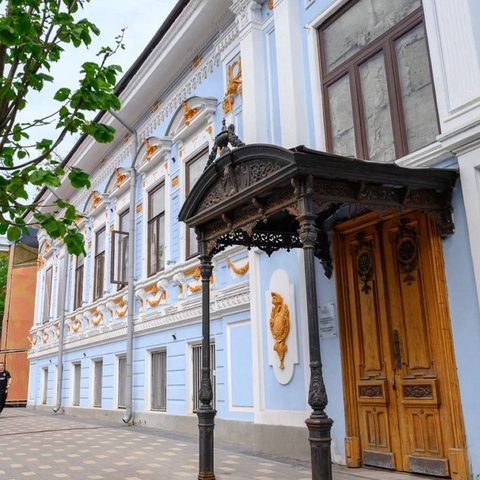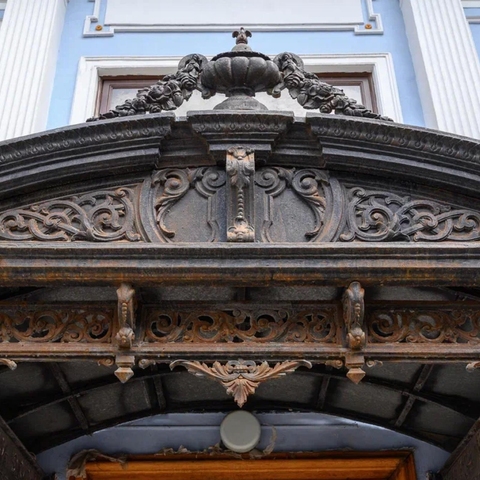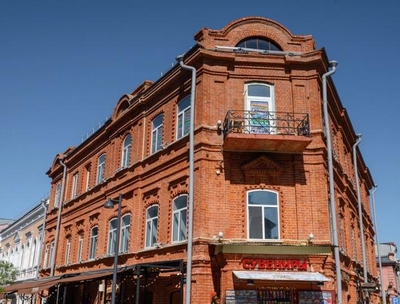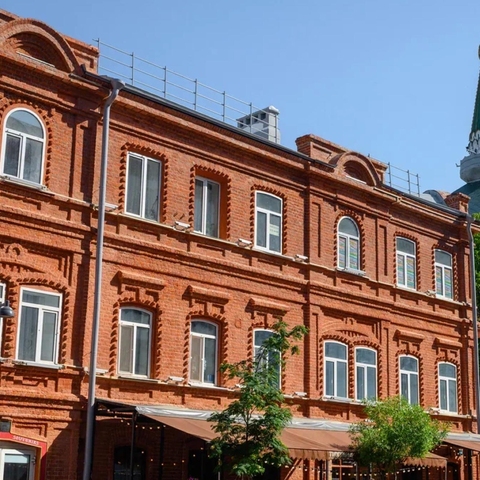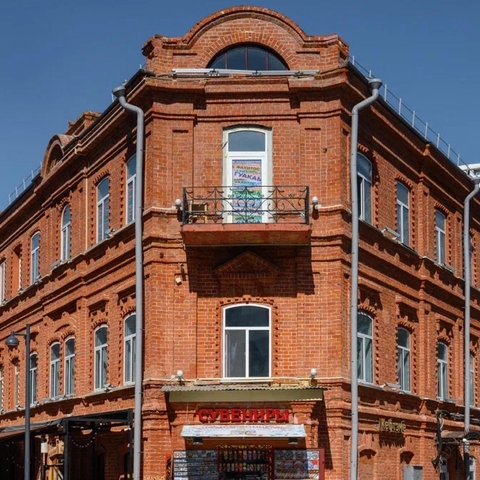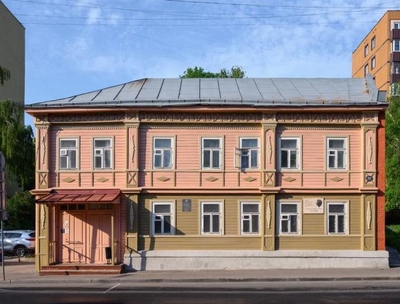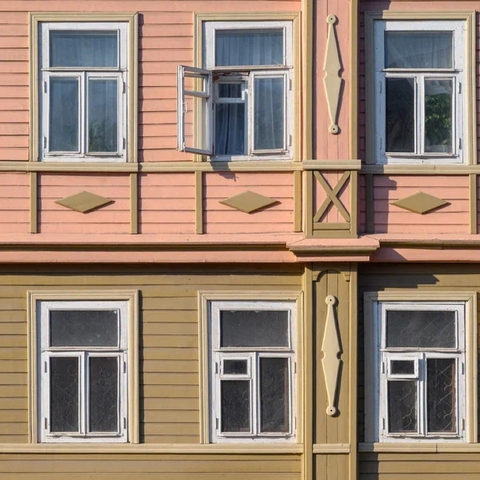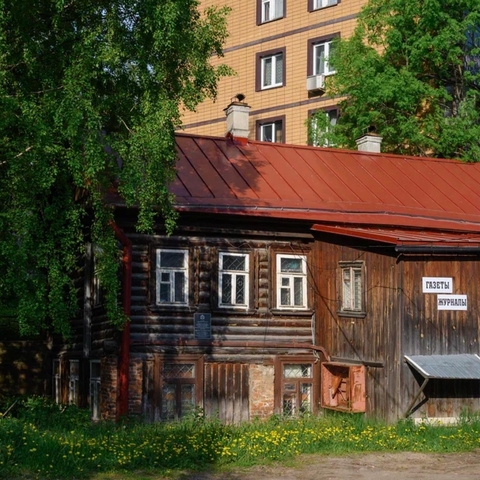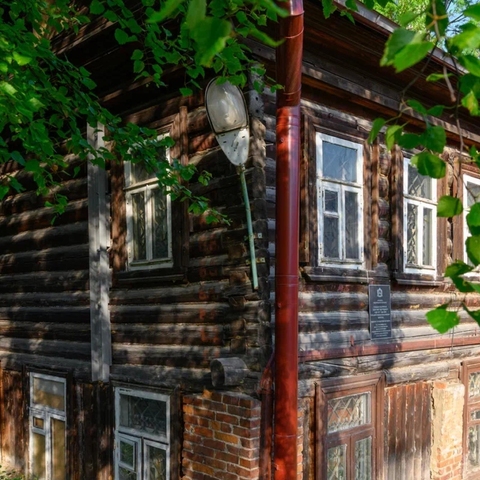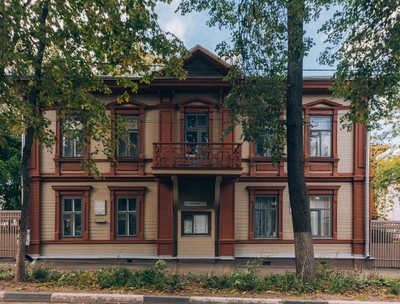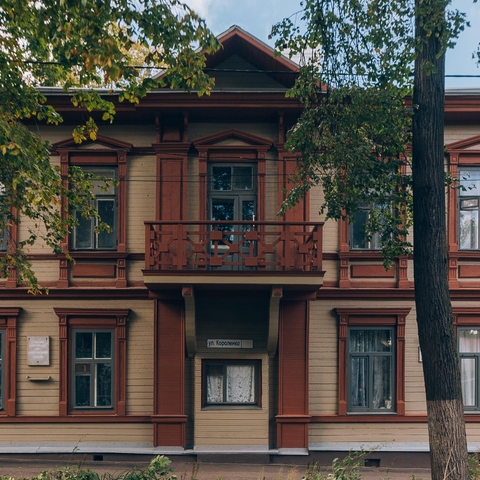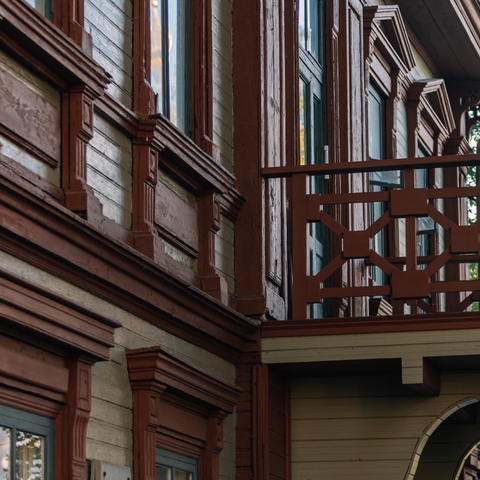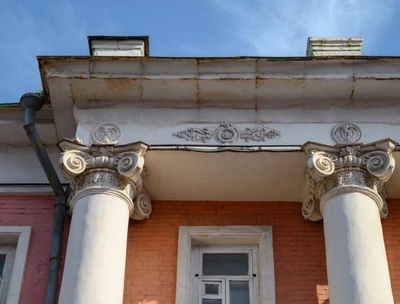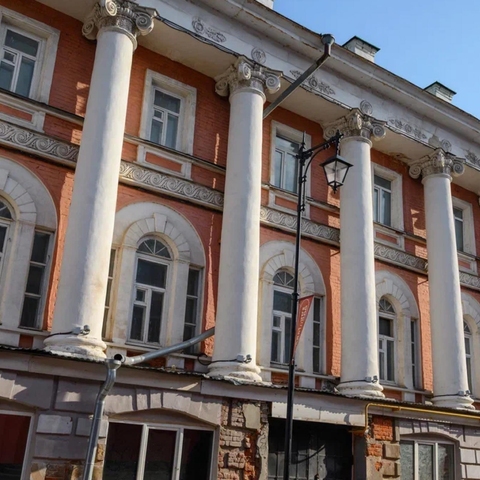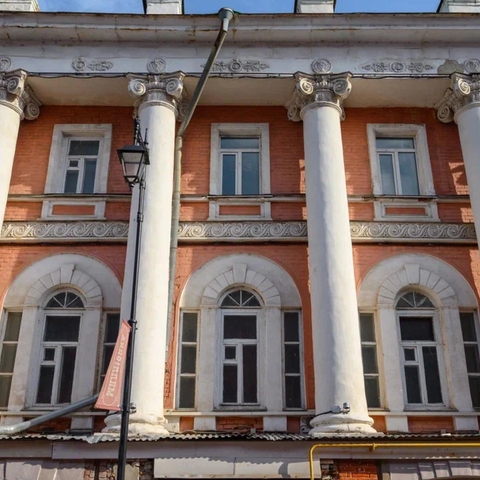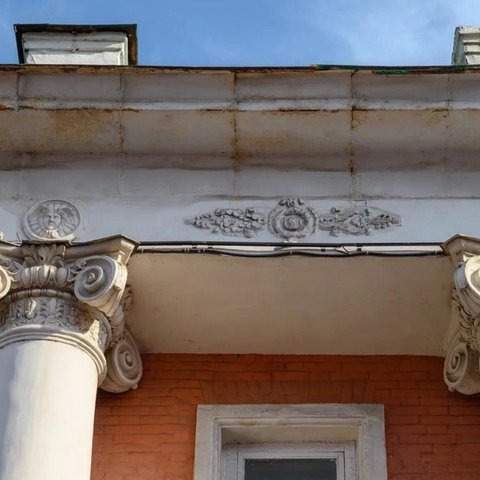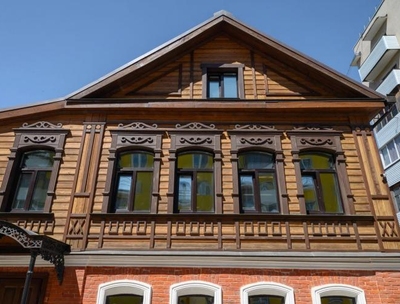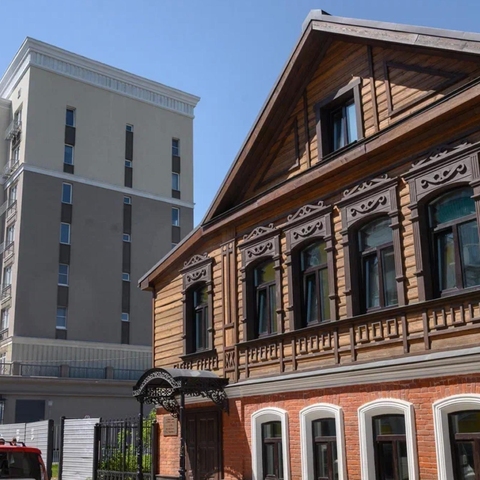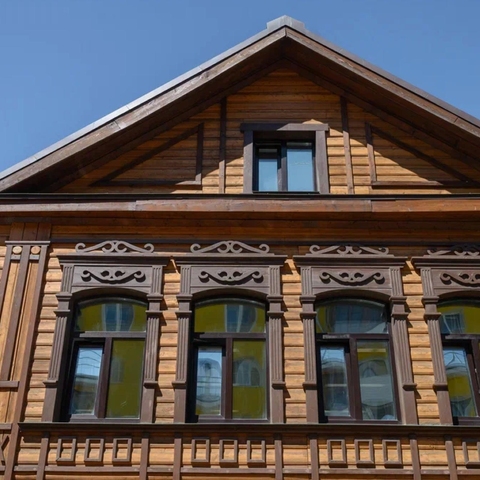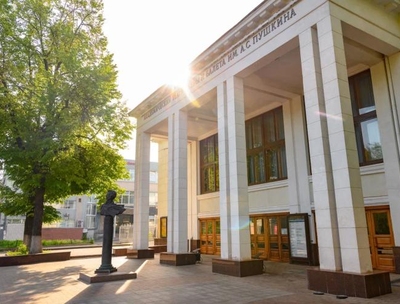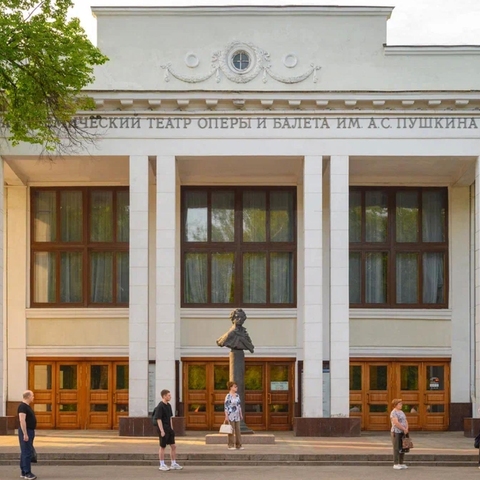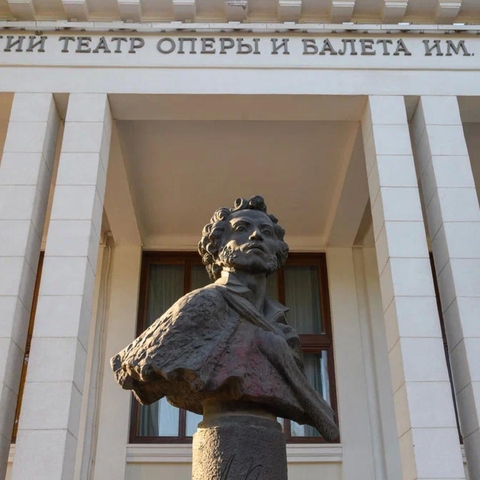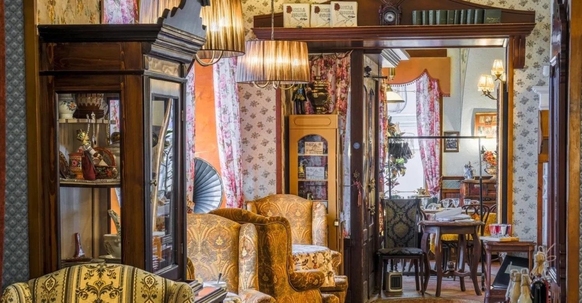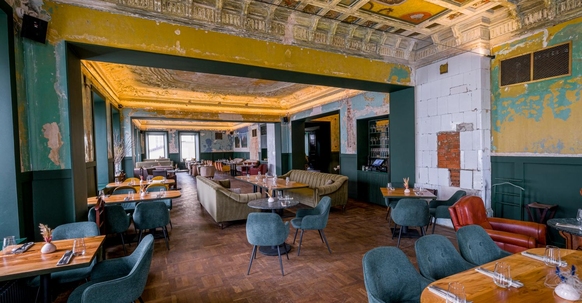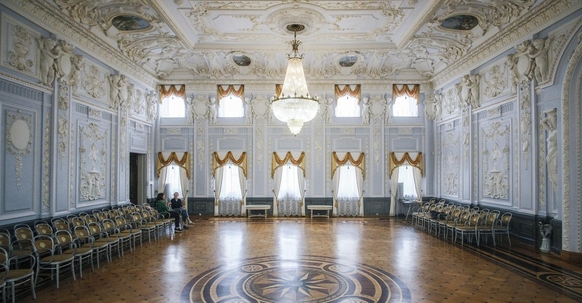Where are the Main Gorky-Related Houses in Nizhny Novgorod?
In Nizhny Novgorod, you can count a hundred places associated with Maxim Gorky: he spent his childhood and youth, worked on books, spent time with his family and led an active social life here. Let’s talk about the most famous Gorky houses, but the list is not limited to this selection, of course!
Gorky and his family rented an apartment on the second floor in the Baron Kirshbaum’s old house with a mezzanine in 1902–1904. Then it turned into a point of attraction for the urban clerisy; Shaliapin and Bunin were guests of the house, and since the 1970s there has been a memorial museum. The writer's life was recreated in these ten rooms, and you can see his personal belongings, for example, a desk, sketches or a tea steamer, which Gorky presented to his wife, Ekaterina Peshkova.
In the house of Gorky's maternal grandfather, Vasily Kashirin, the autobiographical story «Childhood» took place; the future writer found himself there at the age of three, after the death of his father. The furniture was restored based on Gorky's own memoirs; the exhibition contains authentic items from the XIX century. There is a touching sculpture of the young Alyosha Peshkov by Andrei Kikin in the courtyard.
Elegant, lavishly decorated with stucco, architraves and a cast-iron porch, the house of merchant Burmistrova was a real decoration of Zhukovskaya street (now Minina street). At various times, it housed a school, a hospital, and finally the Gorky Literary Museum, which, alas, is currently under restoration.
The house with the «cut-off» corner on the main pedestrian street of the city was owned by merchant Prispeshnikov. It is distinguished not only by its bright appearance; the editorial office of the Nizhegorodsky Listok newspaper was located here from 1895 to 1917, where Maxim Gorky, Vladimir Korolenko, Leonid Andreev and other writers worked. Gorky's first texts as part of the editorial staff were devoted to the All-Russian Exhibition of 1896 and the Fair; many of them have survived to our time.
Not to be confused with the Kashirin House: Alyosha Peshkov was born in the estate on Kovalikhinskaya street, which included the main house, two wings, a garden and a workshop. Gorky lost his parents early, and the business of his grandfather, the foreman at the dye shop, went badly soon, so Gorky managed to live in this house for a very short time.
Wherever Gorky turned out to be, cultural life immediately accumulated around him, as happened with the house on Kanatnaya street, where the writer spent only a year, from 1900 to 1901. Here he wrote «The Song of the Petrel», organized a Christmas Tree for the children of the poor, and Fyodor Shaliapin performed concerts on the balcony — this tradition with opera singers is periodically repeated now during Sacred Quarters tours.
The building, popularly called Stolby («Pillars») for its main feature — a row of six columns — was built according to the design of the famous architect Georg Kiesewetter in 1839. By the end of the century, it was bought by the merchant and the of steamship owner Dmitry Sirotkin. On the initiative of Maxim Gorky, a tea house for the poor was opened here in 1901, where they could not only relax and warm up, but also attend lectures and small performances.
«Well, Lexey, you're not a medal, I don't have a place for you around my neck. Go out into the world… And I went out into the world.» This phrase, spoken towards his grandson by Vasily Kashirin, ended the childhood of the young Alyosha Peshkov. During the day, he worked as a shop-boy in a shoe store for a relative of Leonty Porkhunov, and the rest of the time he worked in his master's house on Polevaya street.
In pre-revolutionary Russia, people's houses were public cultural and educational centers where people received education and rested. Maxim Gorky took a great part in the construction fees. Thanks to him, Fyodor Shaliapin spoke at the People’s House opening. In the 1930s, the People's House was rebuilt as the Pushkin Opera and Ballet Theater, which continues to amaze people with classical performances today.
